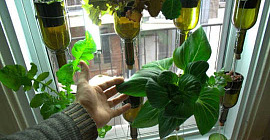

4 Steps to Making Your Home a Sanctuary of Love and Joy using Space Clearing
Thursday, 06 May 2021 00:51Have you ever walked into an empty room and immediately sensed that the atmosphere was laced with tension? You may have had no idea what occurred there prior to your arrival, yet you somehow knew...

Plants Thrive In A Complex World By Communicating, Sharing Resources And Transforming Their Environments
Thursday, 15 April 2021 07:13As a species, humans are wired to collaborate. That’s why lockdowns and remote work have felt difficult for many of us during the COVID-19 pandemic.

The Truth About Tooth Decay
Wednesday, 19 May 2021 09:40To “cry poor mouth” is an expression used to habitually complain about a lack of money. A literal poor mouth, however, represents one of the most widespread global diseases: tooth decay.

How Scientists Make Plant-based Foods Taste and Look More Like Meat
Wednesday, 12 May 2021 08:30In 2019, Burger King Sweden released a plant-based burger, the Rebel Whopper, and the reaction was underwhelming. So, the company challenged its customers to taste the difference.

Obesity Epidemic: Biology, Not Willpower, to Blame
Monday, 24 July 2023 19:42Today, mountains of calorie-rich (and often nutritionally poor) food and lakes of sugary beverages are readily available in much of the world. It’s no longer necessary to leave home — or even stand...

5 Things That Can Interfere with Clear Interspecies Communication
Tuesday, 18 May 2021 16:15In my blog posts, free resources, and courses, I talk a lot about the things that we can do to support and develop our inborn, natural interspecies communication abilities. In this post, I...


